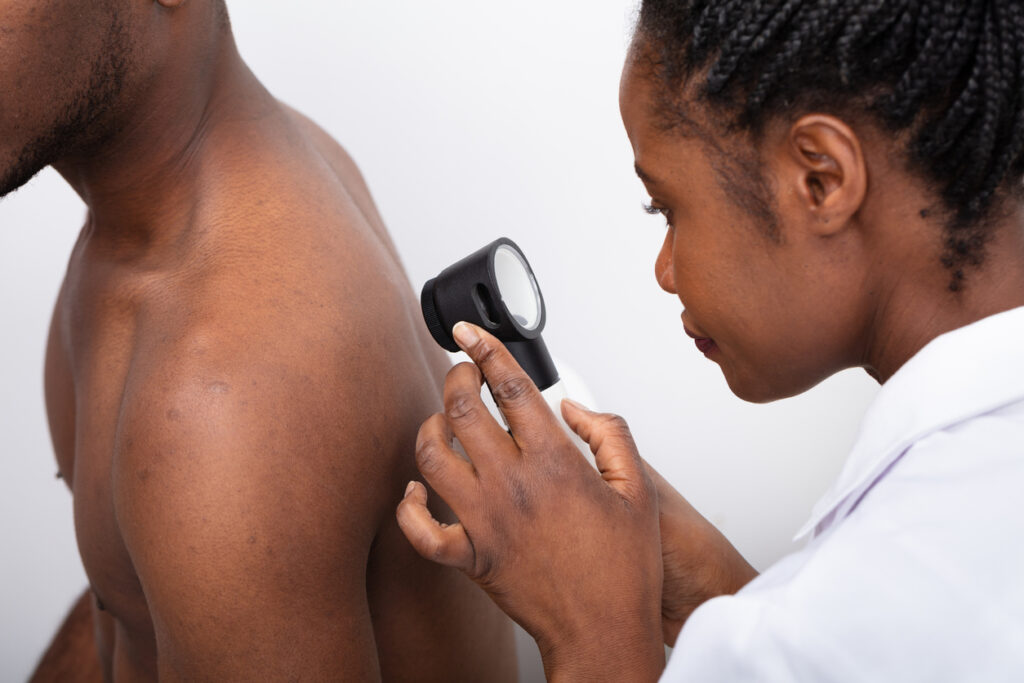Black female patients with melanoma fare better than Black male melanoma patients, new research shows.
The findings, which appear in the May 2024 issue of the Journal of Surgical Oncology, may help inform strategies on how to improve outcomes among non-Hispanic Black people with melanoma.
Exactly why Black men with melanoma fare worse than their female counterparts isn’t fully understood, but researchers do have their theories.
“Several immune signals suggest that women may respond better to some immunotherapies than males,” says surgical oncologist Tina Hieken, MD, senior author of the study and a researcher at Mayo Clinic Comprehensive Cancer Center, in a news release.
Of 492,597 patients in the new study, 1499 (0.3%) were non-Hispanic Black. Black men tended to be older at diagnosis and more likely to have cancer that had spread to their lymph nodes compared to Black women, and this translated to worse survival rates. Black men with stage 3 melanoma have only a 42% chance of surviving for five years, compared to 71% for Black women. Among non-Hispanic Blacks, lower extremity was the most common site, the Primary tumor (T) category was higher, and the stage at presentation was higher than it was in non-Hispanic Whites in the study.
“We saw more extremity melanoma and more later-stage disease,” says Dr. Hieken.
Various factors, including social risk factors and biological components, could be at play, but further research is needed to help determine why these differences exist.
Healthcare professionals should carefully examine areas like palms, soles, and under fingernails, where melanoma might be more challenging to spot on darker skin. “We can incorporate screening for skin lesions or lesions under the nails into the visit for patients as part of their regular checkups,” says Dr. Hieken. “What we want to do is elevate care for our patients.”


